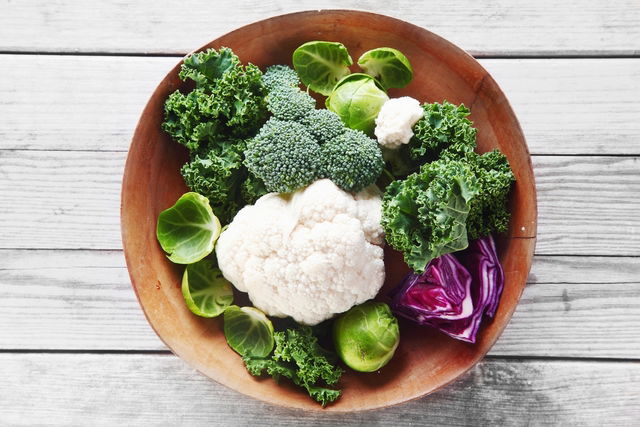Food for bloating relief should be easy to digest and promote healthy bacterial growth in the intestines. A diet to relieve bloating should be aimed at reducing gas production, swelling and abdominal pain.
Some foods that can lead to more gas include beans, broccoli and corn. These are rich in fibers that are tough to digest and cause longer fermentation in the gut.
It is important to highlight that a diet for bloating relief should be individualized, as gas triggers can vary from person to person. Some people may notice more gas with beans, for example, while others are more affected by dairy.

Foods to avoid
Foods that lead to a higher production of gas include:
- Beans, peas, lentils, chickpeas, broccoli, Brussel sprouts, onions, garlic, cauliflower, cucumber, artichokes, asparagus, parsnip and oats. These foods are rich in fiber and resistant starches (like raffinose) which are digested by the body and undergo fermentation, leading to more gas.
- Whole grains, like whole grain rice, oats, quinoa and corn
- Eggs
- Artificial sweeteners, like sorbitol, maltitol and xylitol
- Some fruits that are rich in fructose, which are harder for the body to absorb. These include fruit juices, dehydrated fruits and canned fruits.
- Fizzy drinks, like soda, champagne and sparkling water
- Gum
- Fried food, like french fries, fried nuggets and fried chicken
- Processed carbs, high volume meals and excess sauce
Dairy products, like milk, yogurt and cheese, can also cause bloating in some people, particularly in those who are lactose intolerant. It may not be necessary to fully eliminate lactose from your diet, unless it is a true trigger of bloating.
Gluten can also cause more intestinal gas, especially in people with gluten intolerance or celiac disease. Some foods with gluten include wheat, barley and rye.
Check out other ways to get rid of gas at home using natural remedies.
How to determine bloating triggers
Each person may have different foods that cause more bloating than others. To determine which foods cause more gas, you should track your eating in a food diary and see whether your symptoms are related to specific foods or meals. You can then start to eliminate the foods you are suspicious of for at least 3 days, to see whether you notice bloating relief.
You should complete this test with a registered dietitian, so that your elimination trial does not lead to any nutritional deficiencies.
Learn more about what causes gas and what to do.
Food to eat for bloating
In addition to removing foods that trigger bloating, you can also include food in your diet that promotes digestion and gut health, such as:
- Tomatoes and chicory
- Kefir or yogurt with bifidobacterium or Lactobacillus, which are bacteria that are beneficial for the intestines and act as probiotics (keeping in mind that these are not recommended for those with a lactose intolerance)
- Drinking lemon balm tea, ginger tea, anise tea or carqueja tea. These contain digestive antispasmodic properties that improve digestion and expulsion of gas.
In addition, other tips that can help to reduce gas production include avoiding drinking fluids during meals, eating slowly, chewing carefully and exercising regularly. These help to boost digestion and improve intestinal flow, which can reduce bloating.
Read more about ways to relieve gas during pregnancy that are safe for use at home.
Bloating relief meal plan
The following table outlines an example of a diet plan that can prevent excess gas formation in the gut. However, if any of the foods listed here trigger gas for you individually, you should avoid them:
The types of foods and quantities recommended above vary depending on each person’s age, weight, activity level, health status and health goals. Therefore, you should see a registered dietitian for a thorough assessment, so that a customized meal plan that meets your needs can be developed.
Be sure to check out other home remedies for gas that you can try at home.
